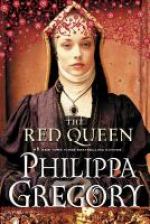Time for another round-up of some of the many books I’ve been devouring lately.
A Curious History of Food and Drink / Ian Crofton
I love, love, love random facts and entertaining trivia. As a child the only games my parents and I would play were “Scrabble” and “Trivial Pursuit”, and we regularly gather for family crossword puzzle-solving contests. I’m also a bit of a history buff, with a passion for “everyday history” – stories of the lives of everyday people throughout history. This humorous collection of food-themed information tidbits, then, really hit the spot. Ever since picking up this book in my local library I’ve been boring thrilling friends and family with some of the factoids I’ve gleaned from its pages – did you know, for example, that the breakfast favourite currently known as French toast was originally called German toast, and was renamed on account of the First World War? Fascinating! The book is arranged in chronological order, going back as far as prehistoric times, and each anecdote is just a little morsel. It’s a perfect commuting book, as you can easily read a tidbit or two and pick it up again hours later.
The Red Queen / Philippa Gregory
I love historical fiction, and I quite enjoyed “The Other Boleyn Girl”, despite its questionable portrayal of Anne Boleyn, but I just could not get into The Red Queen. A major reason for this is that I could not stand the protagonist, Margaret Beaufort. I understand that the reader is meant to admire this woman’s tenacity and her determination, even if they cannot stand her personality, but I just could not bring myself to care about this character, and so there was no reason for me to feel any involvement in the story. Margaret at times seemed more like a present-day teenager than a woman of the early Tudor era. Readers are encouraged to feel that Margaret is particularly cruelly treated because she is repeatedly forced into arranged marriages, however arranged marriages were considered the norm for hundreds of years, and it is probable that a well-born woman like Margaret would have expected such a marriage as a matter of course. As well, while arranged marriage at the age of 12 seems abhorrent to modern readers, average life expectancy at birth in Tudor England is typically thought to have been around 35 years of age. A 12 year old girl would likely have been nearing middle age, and her marriage would not have been all that unusual. When writing about history it is all too easy to reimagine the past through the lens of the present, which can make it easier for readers to identify with characters and understand cultures that have long since disappeared. This is a work of fiction, which means the author can do whatever the heck she pleases, but Gregory’s novels are often touted as being impeccably researched and are unfortunately sometimes viewed as historical fact rather than interpretation, which can be problematic for readers.
I have long been a fan of P D James and her Inspector Dalgliesh novels, and I was delighted to find a copy of her debut novel at a library book sale. I had never read this early novel, and I found it quite fascinating. Beyond being an engaging mystery, Cover Her Face provides insight into 1960s England, particularly the social conventions of this turbulent era. Much of the story revolves around an unwed mother of questionable moral character, whose murder highlights the prejudices of English society. What really struck me were the unnerving parallels between several of the scenes in the book and comments recently made public from 2016 potential presidential hopeful Jeb Bush. Mr. Bush is quoted in a 1995 book Profiles in Character as saying:
One of the reasons more young women are giving birth out of wedlock and more young men are walking away from their paternal obligations is that there is no longer a stigma attached to this behavior, no reason to feel shame. Many of these young women and young men look around and see their friends engaged in the same irresponsible conduct. Their parents and neighbors have become ineffective at attaching some sense of ridicule to this behavior. There was a time when neighbors and communities would frown on out of wedlock births and when public condemnation was enough of a stimulus for one to be careful.
Now, here’s a passage from Cover Her Face, in which several characters are debating the treatment of unwed mothers in the community.
‘I don’t think, Doctor, that we should talk about the problem of these children too lightly. Naturally we must show Christian charity’ – here Miss Liddell gave a half bow in the direction of the vicar as if acknowledging the presence of another expert and apologizing for the intrusion into his field – ‘but I can’t help feeling that society as a whole is getting too soft with these girls. The moral standards of the country will continue to fall if these children are to receive more consideration than those born in wedlock. And it’s happing already! There’s many a poor, respectable mother who doesn’t get half the fussing and attention which is lavished on some of these girls.’
33 years separate these two passages, yet remarkably little has changed in their societal view of unmarried mothers. Note that the women referred to in Cover Her Face are not young teenagers but grown women in their twenties, living in an era in which sexual education and access to contraception was limited – unfortunately these conditions have also changed little in parts of North America. Though primarily an entertaining who-done-it, Cover Her Face is an engaging look at a bygone era that remains eerily connected to the present day.


